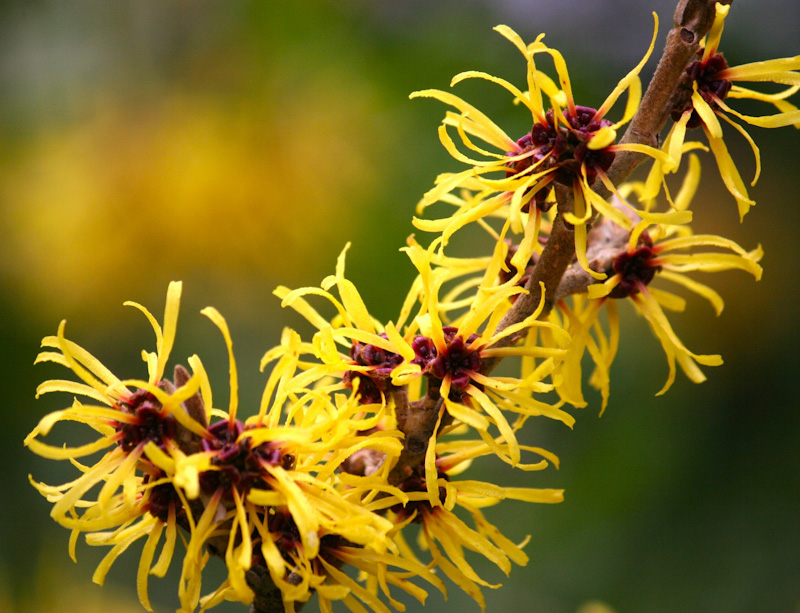
Photo and Commentary ©2024 by Cheryl Boardman
Monday, February 12, 2024
Before our Sabbath School class started this past week, we were talking about early signs of spring — usually in the form of flowers.
When we look around us or watch the news and see all of the things that are no longer beautiful, it is good to remember that there is still beauty in the world around us.
I took this picture of a witch hazel tree in the winter garden at the arboretum in Seattle. In addition to the witch hazel trees (red to yellow), the winter garden contains a number of early blooming plants including daphne, which has an amazing perfume, camellias, early blooming rhododendrons, hellebores and cyclamens among others. You might even see an overwintering hummingbird!
I had never seen these amazing trees before I went there although I had heard of their medicinal usage. They have been used by Native Americans and as a traditional medicine for people in North America and Europe for a variety of ailments. Most of the items I came up with said that more research is needed on their use.
All of the beauty in the garden reminds me of the words from the old hymn: For the Beauty of the Earth:
For the beauty of the earth,
for the beauty of the skies,
for the love which from our birth
over and around us lies.
Refrain:
Christ our God, to thee we raise
this our hymn of grateful praise.
For the beauty of each hour
of the day and of the night,
hill and vale, and tree and flower,
sun and moon and stars of light, [Refrain]
For the joy of ear and eye,
for the heart and mind’s delight,
for the mystic harmony
linking sense to sound and sight, [Refrain]
For the joy of human love,
brother, sister, parent, child,
friends on earth, and friends above,
for all gentle thoughts and mild, [Refrain]
For the Church which evermore
lifteth holy hands above,
offering up on every shore
thy pure sacrifice of love, [Refrain]
For each perfect gift of thine
to the world so freely given,
faith and hope and love divine,
peace on earth and joy in heaven. [Refrain]
Author: Folliot Sandford Pierpont, 1835-1917
